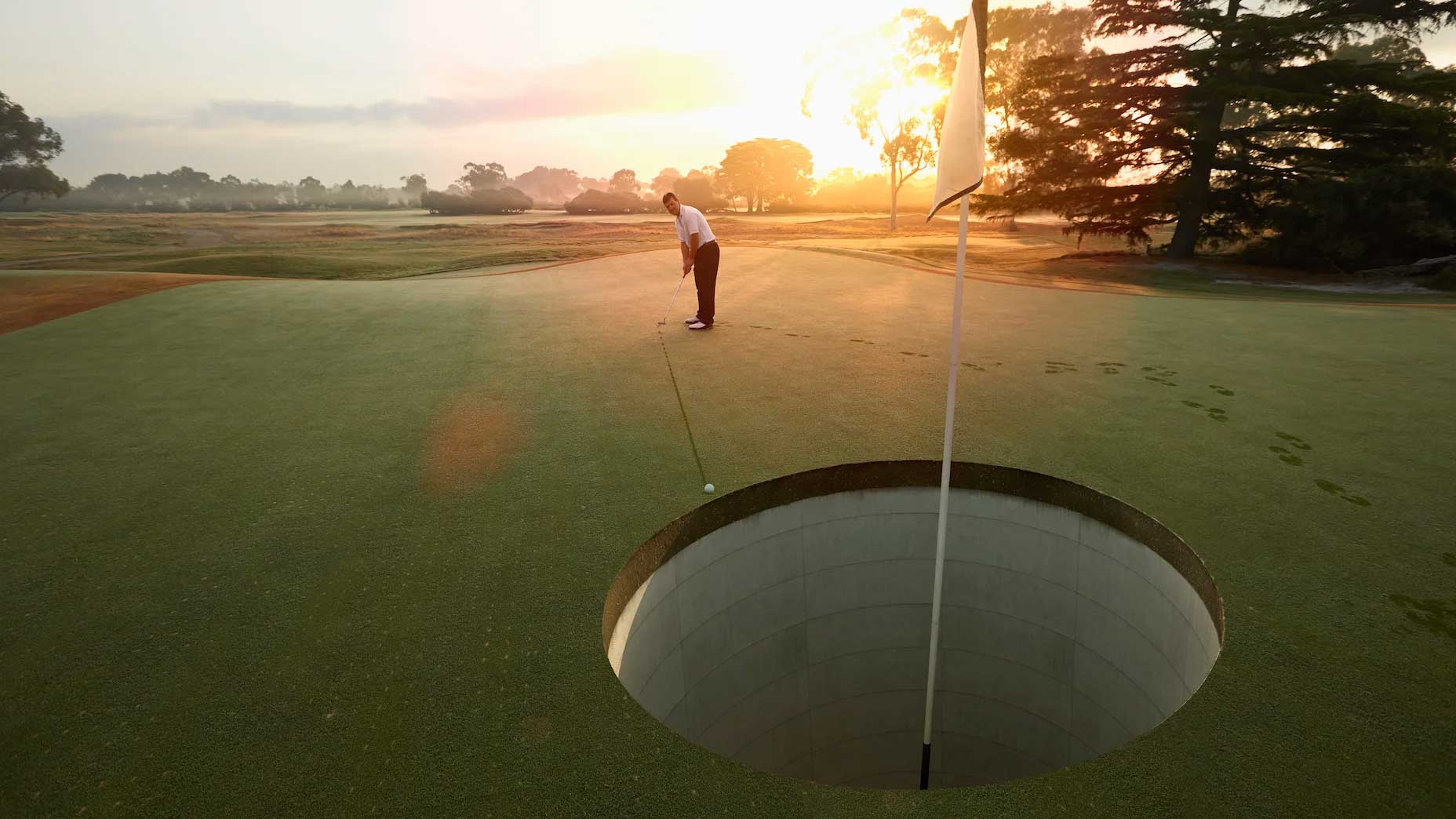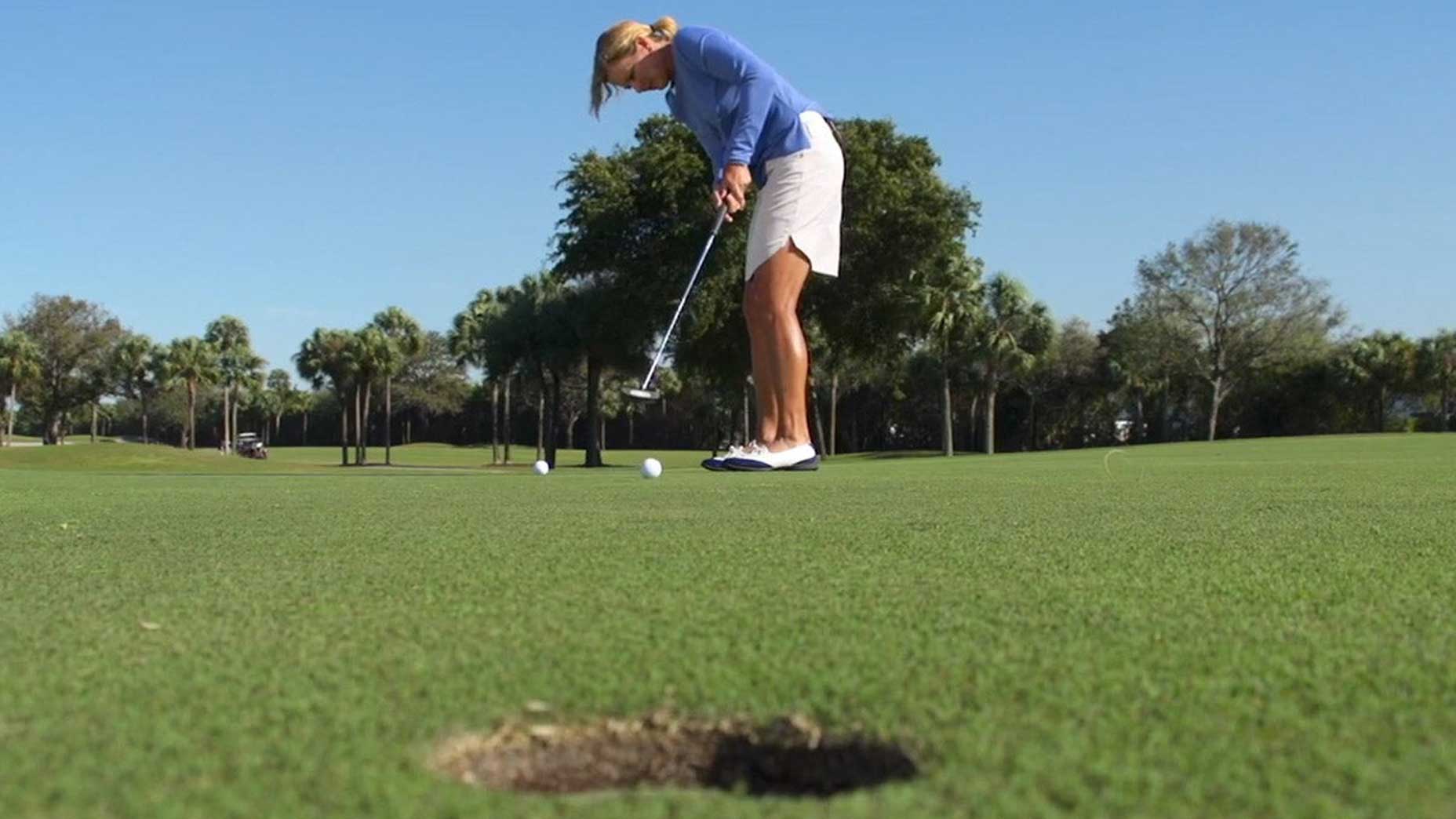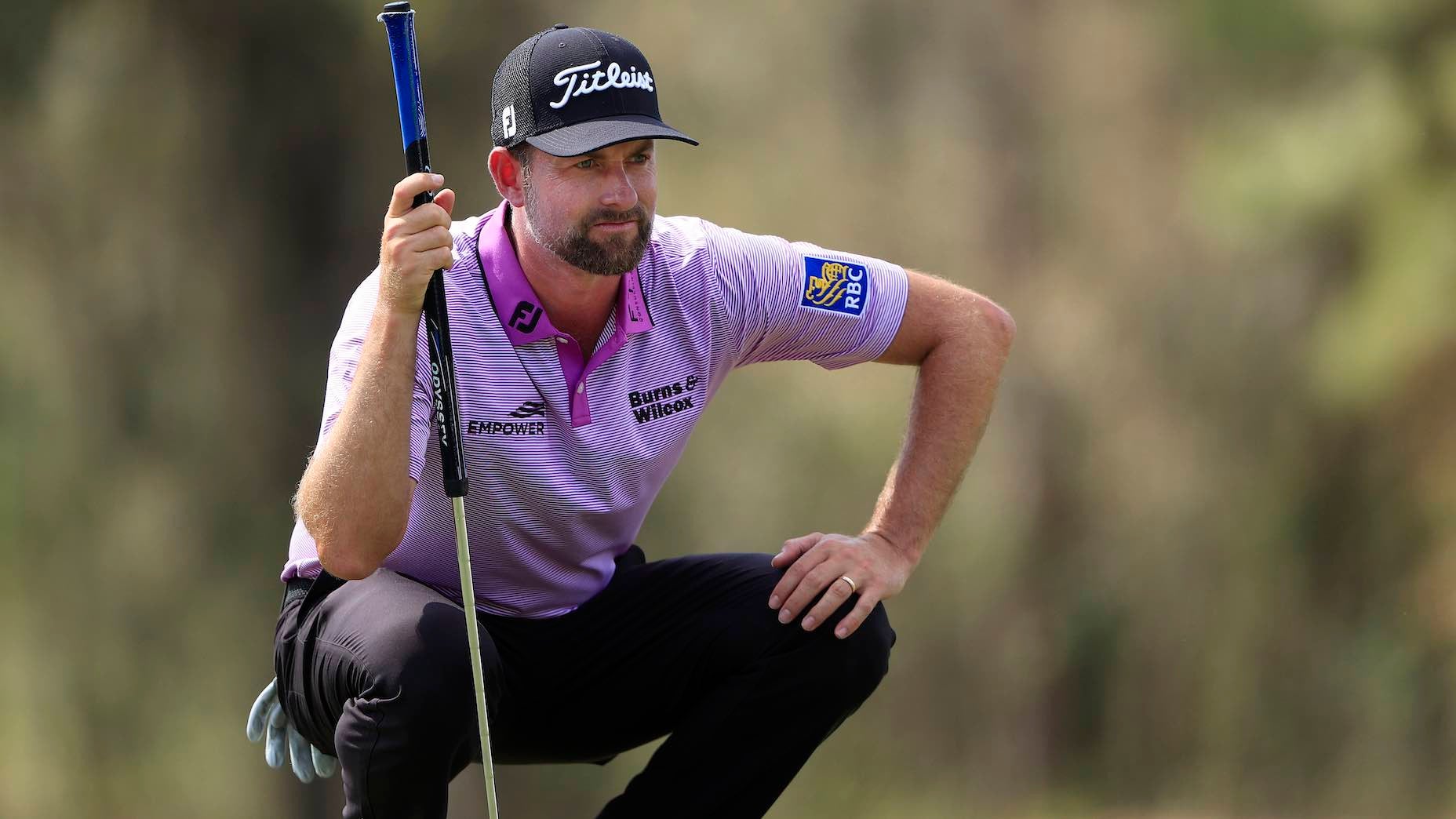
Making more short putts is the fastest way to transform your scores.
Getty Images
You’re feeling good. You’ve either hit your approach shot close to the hole or rolled your birdie putt up to near tap-in range. And then you do something that all of us have done — even Tour players.
You miss the short putt.
It might be the most frustrating and embarrassing mistake in golf, but don’t give up hope. Making short putts is one of the most effective ways of lowering your scores.
Practice the right things, and you, too, can improve your short putting. Here’s how…

1. Aim the putterface well
Where you aim your putterface has to be a huge priority if you want to make your short putts, because the ball will travel where your putterface is pointed at impact. Yes, your path influences it, but the putterface is king.
You can see good players do it in their pre-putt routine: After their practice strokes, they take a moment to aim the putterface before settling into that grip and setup.
2. Get a grip
The way you place your hands on your putter’s grip will stabilize the club, and influence your ability to deliver a square face at impact.
There are so many ways to hold a putter, so you have plenty of choices. I’d suggest using whatever makes you feel most coordinated, and if you’re looking for something basic, take your cues from the grip’s design. Most grips have a flat top. Place your thumbs on the flat portion, and because the club is more upright, it’s designed to be held more in your palms than your other clubs, which will eliminate excessive wrist movement.

3. Good posture
Good posture, where you bow forward from your hips and let your arms hang below your shoulders, creates a natural path for your arms to swing. You can practice this without your putter: Bow forward from your hips, clap your hands together and allow your arms to swing naturally.
Your stance width can vary according to preference, but generally, it should be roughly the width of your hips.
4. Stroke, and then look
Once you’re setup with a nice square clubface, you want to keep your body very quiet as your arms swing. The task sounds simple, but can be challenging because so many of us are result-oriented. We can’t help but peek to see if the putt is heading towards the hole.
Watch the best putters when they putt, then you’ll see how stable they keep their lower body and head as they stroke. You should keep your head down long enough to see the putter make contact with the back of the ball. Let the stroke complete fully, and only then can you look up.

5. Your stroke is circular
Every putting stroke has some degree of arc. It may be difficult to see on short putts, but with all the modern technology and our ability to measure these things, we know it’s there.
If your underarms stay close to your body, and your putterhead stays relatively low to the ground and through, this natural curving path will roll the ball end-over-end;
If you incorrectly try to swing your putter back straight back and straight through, your arms will tend to disconnect from your body.
6. Limit your backstroke
Your backstroke controls the distance of your putts. when you have a short putt, you only need a short backstroke. If you swing your putter back the proper length for the putt, smaller strokes will naturally deliver less power. If your backstroke is too large, your body will attempt to put on the brakes and decelerate. This is tough to time consistently, and it can make your putterface less stable, too.

7. Minimize moving parts
To make your short putts, the emphasis is more on accuracy than power. The priority is making sure the ball starts on the correct line. In this regard, the less moving parts, the better.
Too much movement in your lower body can decrease your efficiency. Swaying back and forth is a common cause I see; you should feel like your feet are planted firmly on the ground during your stroke.
8. Read every putt
Take the time the read the break on every short putt. I often watch golfers hurry up and stroke their short putts without much thought, assuming every putt is straight, but they’re missing an important step. Walk in a semi-circle around the hole to see where the high point is, or consult a greenbook.
You probably won’t need to play the putt too much outside of the hole, but aiming for the left edge on a right to left braking putt can make all the difference.

9. Respect the challenge
A good attitude is helpful throughout life, including on short putts. Get over it when it doesn’t work out, remember that you’re playing for fun, but give every short putt your full attention. If you’re not prepared to do that, you might as well pick up your ball.
Don’t think about these short putts as ones you “should” make. Think about them as putts you need to earn. And to do that, you need to respect the challenge they present and focus.
10. Practice with feedback.
Practicing properly means practicing with feedback. I used to spend hours putting on a chalk line when I played in college and professionally to make sure the putt was starting on line. Nowadays, they have putting matts with lines on them which accomplish the same thing. Whatever you use, practicing with feedback — meaning, you can see what’s going wrong when it’s going wrong — will help you get it right and build your confidence along the way.
"Short" - Google News
August 07, 2021 at 05:31PM
https://ift.tt/2VEU4Tt
10 tips to help golfers make all their short putts - Golf.com
"Short" - Google News
https://ift.tt/2QJPxcA
Bagikan Berita Ini














0 Response to "10 tips to help golfers make all their short putts - Golf.com"
Post a Comment